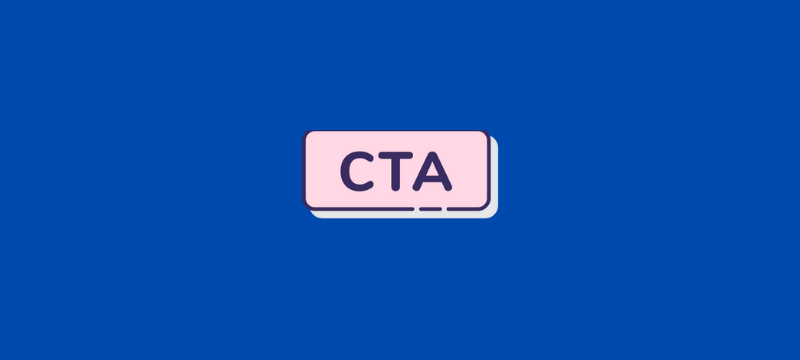
What is a call to action?
A call to action is a way to persuade the visitors a website receives to take a certain action. It is most often a command or a prompt to take action such as ‘Add to cart’ or ‘Install now. It also includes some sort of hyperlink or button. Digital marketing usually includes CTAs in the form of web links, buttons with text on them, or email campaigns that have webpage links that can guide the visitor to take more action.
Why is a call to action important?
One of the main aspects of the webpage is its call to action. It helps the visitor navigate your website and know what to do next. If a website is lacking clear CTAs, the visitor might not know how to move on to the next step to sign up for your service or buy your product. It might lead them to exit the website without doing what they had visited your website to do due to sheer lack of direction.
A call to action is like a signboard that directs your visitors and customers to the further steps and gets rid of the frustration your visitors might feel at the lack of clear CTAs. If there are several options for the user to choose from, you can add more than one call to action on your page to help your visitor take the appropriate actions.
How to write a CTA?
Several websites, especially social media, focus on advertisements, clicks on your posts, as well as engagement. Unfortunately, it is much harder than it seems. A lot of people also use ad blockers, so it is harder to reach them that way. A call to action is therefore vital to boost your engagement and conversions regardless of the kind of website or social media account you run. Let’s take a look at the best ways to accomplish this.
1. Talk to Us
This strategy of CTA works as it encourages your visitors to communicate with you. Along with being extremely warm and inviting, it communicates to your visitors that you care about their input and welcome suggestions for improvement. Visitors that are keen to engage with your products and services like to feel that their voice matters and their opinions are valued. The friendly vibe of the phrase ‘Talk to us’ helps build a bridge between the customer and your company that helps establish a long-term relationship and gain the loyalty of your customers.
2. Get your buttons to contrast
The majority of the time, ensure that the color you choose for your CTA stands out against all the other elements that form your webpage. The color of your button should be able to pop when set in front of the background. You should go for complementary (opposite) colors on the color wheel such as a yellow button on a purple background that will catch your customer’s eye and help them navigate.
3. Use strong action words
CTAs that are concise and strong are incredibly convincing and it also adheres to the character restrictions that ads set. You can begin with a verb such as ‘install’, and then add the adverb such as ‘now’ or the subject like ‘software’, or you can include both.
Following the above examples, your call to action could look something like ‘Install Software Now’ or ‘Buy now. There are several common calls to action that you can mix and match according to your character limit and the action you want the visitors to take. For example, it could also be ‘Buy software now’.
4. Ensure there is a secondary CTAs
While your website has one goal it is focused on accomplishing that sets the precedent on a singular call to action, you would be amiss if you don’t provide your visitors with more than one option to take action. It might be your preference that your visitors immediately buy, however, that might not always be the case.
When your website has just a single call to action, you can basically restrict your customers between either acting on what you want or exiting your website. When you introduce more than one option, you provide your customers alternative options to stay on your website and browse, not just leave because the initial CTA wasn’t up to their liking. The best way to accomplish this is to present your visitors with added offers that they can scout and benefit from without any cost.
You can also call attention to the alternatives that your customers can indulge in while interacting with your content further. For example, if you have a clothing selling website, the main CTA would be to buy the clothes and go to the payment page. However, if someone does not want to buy your products at that given moment, the backup CTA option could be to ‘Wishlist’ the products so that they can keep on browsing or buy them at a later date.
It results in your customers not immediately leaving when the main CTA is not to their liking or they aren’t there yet. They are offered an alternative to stay on your website that could ultimately lead them to the purchase stage.
Conclusion
A call to action is necessary to direct your customers to navigate your website and take the steps you need them to. Ensure your CTAs ate short and straightforward so that there is no confusion. Also, provide them with multiple CTAs to choose from. This will ensure that there is an alternative they can choose and interact with your website further.